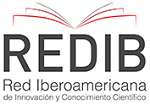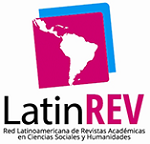Caracterización de los residuos de la cosecha del plátano harton para un potencial uso industrial
DOI:
https://doi.org/10.15649/2346030X.821Palabras clave:
Plátano, Residuos agroindustriales, Industria, Economía Circular, Norte de SantanderResumen
La presente investigación caracterizó los residuos de la cosecha de plátano (Musa Paradisiaca Spp) que se producen en la vereda la Alejandra, municipio del Zulia, Norte de Santander, Colombia. El objetivo del estudio es identificar propiedades que puedan ser útiles para su incorporación en los procesos industriales de la región, fortaleciendo la economía circular del departamento y ayudando a reducir las afectaciones al medioambiente que se generan por un mal manejo de los residuos. Las partes de la planta que se estudiaron pertenecen al pesudotallo, el raquis, las hojas y las cascaras, se tomaron medidas de humedad en cada muestra. Una vez secos, se molturaron a fin de preparar harinas, determinado la granulometría y el rendimiento de la molienda en dos tipos de molinos comúnmente utilizados en la región (martillo y de disco). Finalmente, se calcinó las harinas conforme a las normas ISO 2171 y NTC 282, obteniendo cenizas a las que se realizaron ensayos de fluorescencia de rayos X, para estimar la constitución química de las muestras. Los resultados mostraron gran cantidad de agua en la composición general de los desechos en verde, el rendimiento de los molinos fue muy similar, sin embargo, la granulometría fue distinta, consiguiéndose granos de menor diámetro en las harinas producidas en el molino de martillo respecto al de disco. La composición química reveló una alta concentración de K2O seguido de otros óxidos como CaO, P2O5.y SiO2, principalmente. Los valores de los análisis muestran condiciones favorables para aplicaciones industriales, especialmente en el sector de alimentos, químico y de papel.
Referencias
D. Mohapatra, S. Mishra y N. Sutar, “Banana and its by-product utilisation: an overview”, Journal of Scientific & Industrial Research, pp. 323-329, 2010.
N.W. Simmonds y R.H. Stover, “Bananas (Tropical Agriculture)”, 3rd Revised edition ed., New York: Blackwell Science Ltd, 1987.
Departamento Admintrativo Nacional de Estadistica, “El cultivo del plátano (Musa paradisiaca), un importante alimento para el mundo”, DANE, Bogotá, 2014.
MINAGRICULTURA, “CADENA DE PLÁTANO”, Ministerio de Agricultura de Colombia, Bogotá, 2018.
Economic Research Service, “Situación actual y perspectivas del mercado del plátano”, USAID, 2009.
G. Blasco y F. Gómez, “Propiedades funcionales del plátano (Musa sp)”, Revista Medica de la Universidad de Veracruz, pp. 22-26, 2014.
D. Grandar, A. Mejía y G. Jiménez, “Utilización de residuos de plátano para la producción de metabolitos secundarios por fermentación en estado sólido con el hongo Lentinus Crinitus”, VITAE, vol. 12, nº 2, pp. 13-20, 2005.
N. Abdullah, F. Sulaiman, M.A. Miskam y R.M. Taib, “Characterization of Banana (Musa spp.) Pseudo-Stem and Fruit-“, International Scholarly and Scientific Research & Innovation, vol. 8, nº 8, pp. 815-819, 2014.
C. Belalcazar, J. Valencia y J. Lozada, “La planta y el fruto”, de Manual de Asistencia Técnica No. 50. ICA, Armenia, 1991, p. 376.
P. Wachirasiri, S. Julakarangka y S. Wanlapa, “he effects of banana peel preparations on the properties of banana peel dietary fiber concentrate”, Songklanakarin J. Sci. Technol, vol. 31, nº 6, pp. 605-611, 2009.
I. Hussain y O.M. Tarar, “Pulp and Paper Making by using Waste Banana Stem”, Jorunal of Modern Science and Technology, vol. 2, nº 2, pp. 36-40, 2014.
I.O. Olabanji, E.A. Oluyemi y O.S. Ajayi, “Metal analyses of ash derived alkalis from banana and plantain peels (Musa spp.) in soap making”, African Journal of Biotechnology, vol. 11, nº 99, pp. 16512-16518, 2012.
M.M. Mustaffa y S. Sathiamoorthy, “Status of banana industry in India”, de Advancing banana and platain R & D in Asia and the Pacific, Philippines, 2002.
Instituto Colombiano de Normas Técnicas y Certificación, “Norma Técnica Colombiana NTC 282. Industrias Alimentarias. Harina de trigo. Metodos de ensayo”, Instituto Colombiano de Normas Técnicas y Certificación, Bogotá, 2002.
International Organization for Standardization, “ISO 2171. Cerals, pulses and by-products - Determination of ash yield by incineration”, ISO, Suiza, 2007.
A. Guarnizo-Franco, P.N. Martinez-Yepes y M.L. Pinzón-Bedoya, “Azucares del pseudotallo de plátano: una opción para la obtención de alcohol de segunda generación”, Facultad de Ciencias Básicas, vol. 10, nº 1, pp. 39-51, 2012.
M. Mazzeo M.A. Alzate y M. Marin, “Ontencion de almidon a partir de residuos poscosecha del plátano Dominico Hartó (Musa AAB Simmonds)”, Vector, vol. 3, pp. 57-69, 2008.
B. Chavéz, “Evaluación de la harina y ceniza obtenida a partir de residuos generados en la cosecha del plátano hartón (musa paradisiaca ssp) producida en el municipio del Zulia Norte de Santander de interés de la industria cerámica”, Cúcuta: Tesis Ingenieria Agroindustrial. Universidad Francisco de Paula Santander, 2018.
P. Zhang, R.L. Whistler, J.N. BeMiller y B.R. Hamaker, “Banana starch: production, physicochemical properties, and digestibility - a review”, Carbohydrate Polymers, vol. 59, nº 4, pp. 443-458, 2005.
K. Li, S. Fu, H. Zhan, Y. Zhan y L.A. Lucia, “Analysis of the chemical composition and morphological structure of banana pseudo-stem”, BioResources, vol. 5, nº 2, pp. 578-585, 2010.
A.O. Florez, J. Sánchez, F.M. Garcia y J. Bautista-Ruiz, “Technological characterization of Guayabo group clays from Cúcuta-El Zulia sector for use in ceramic industry”, Journal of Physics: Conference Series, vol. 1123, nº 012036, pp. 1-8, 2018.
J. Sánchez-Molina y J.I. Diaz-Garcia, “Introducción a los hornos utilizados en la industria cerámica tradicional”, Cúcuta: Universidad Francisco de Paula Santander, 2011.
D.V. Melo-Sabogal, Y. Torres-Grisales, J.A. Serna-Jiménez y L.S. Torres-Valenzuela, “Aprovechamiento de pulpa y cáscara de plátano (Musa Paradisiaca spp) para la obtención de Maltodextrina”, Biotecnologia en el Sector Agropecuario y Agroindustrial, vol. 13, nº 2, pp. 76-85, 2015.
A. Gebregergs, M. Gebresemati y O. Sahu, “Industrial ethanol from banana peels for developing counties: Response surface methodology”, Pacific Science Review A: Natural Science and Engineering, vol. 18, nº 1, pp. 22-29, 2016.
L. Oliveira, N. Cordeiro, D. Evtuguin, I.C. Torres y A.J.D. Silvestre, “Chemical composition of different morphological parts from ‘Dwarf Cavendish’ banana plant and their potential as a non-wood renewable source of natural products”, Industrial Crops and Products, vol. 26, nº 2, pp. 163-172, 2007.
S. Uma, S. Kalpana, S. Sathiamoorthy y V. Kumar, “Evaluation of commercial cultivars of banana (Musa spp) for their suitability for the fibre industry”, Plant genetic resources newsletter, vol. 145, pp. 29-35, 1979.
Publicado
Cómo citar
Descargas
Número
Sección
Licencia
La revista ofrece acceso abierto bajo una Licencia Creative Commons Attibution License

Esta obra está bajo una licencia Creative Commons Attribution (CC BY 4.0).









